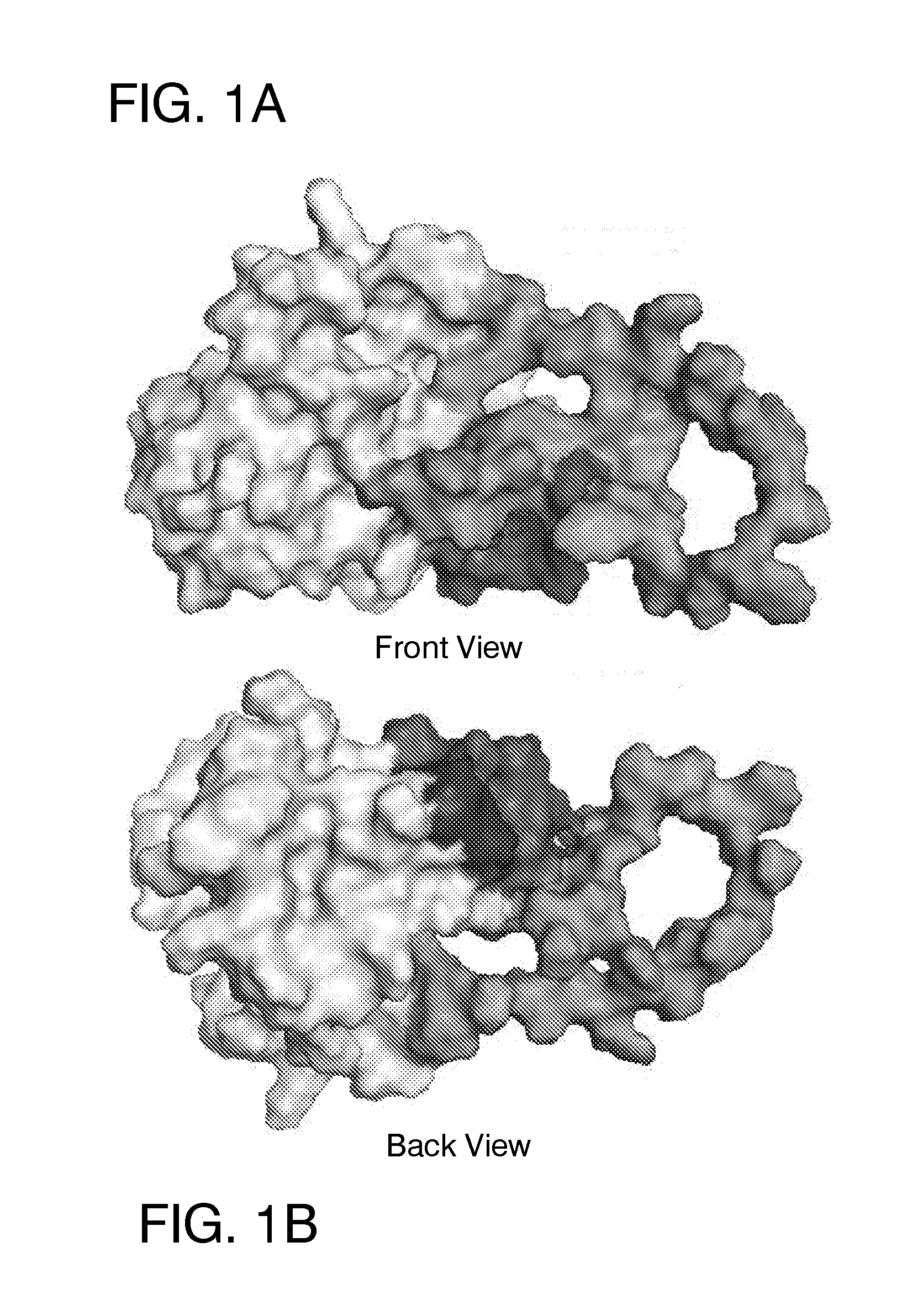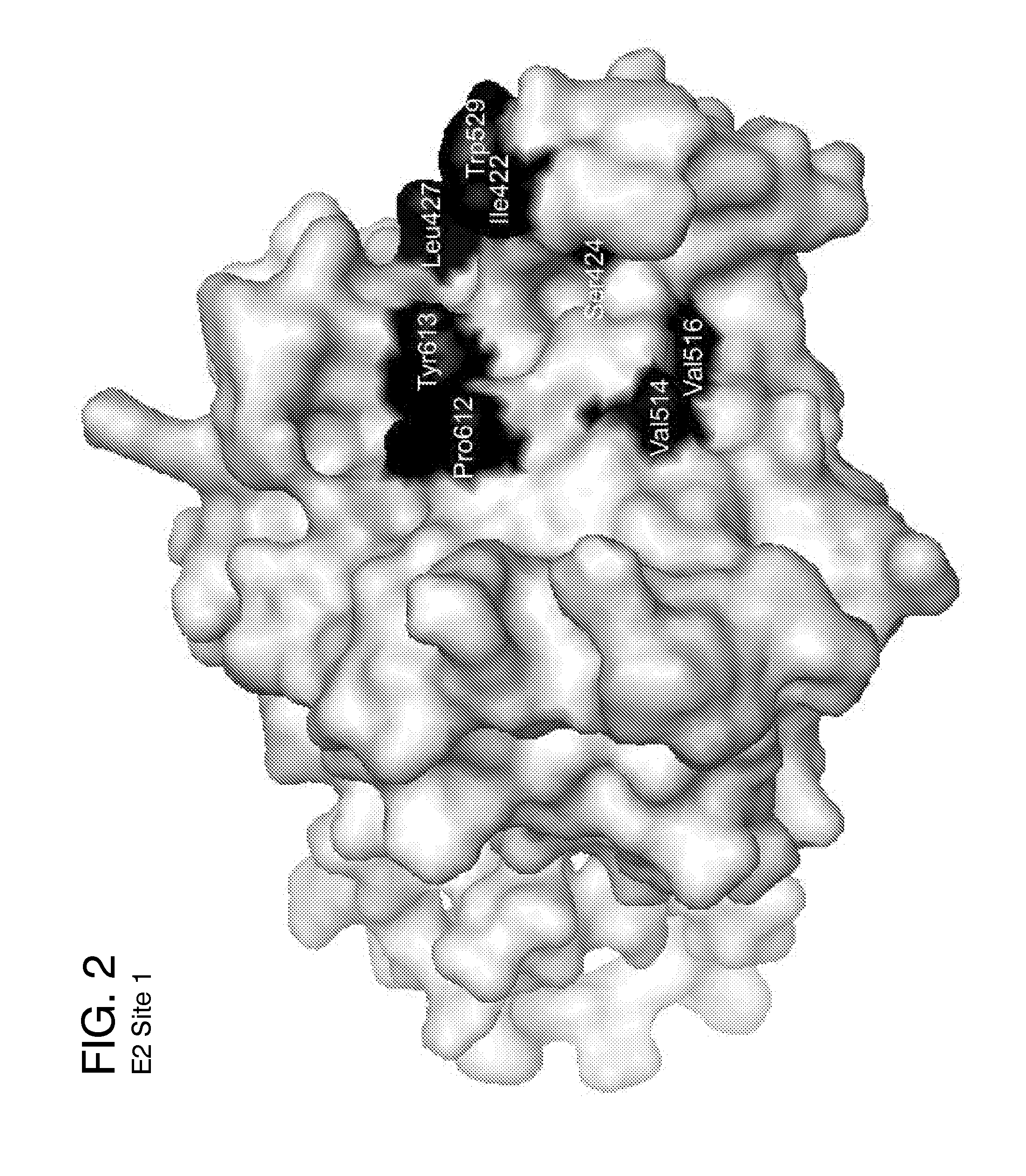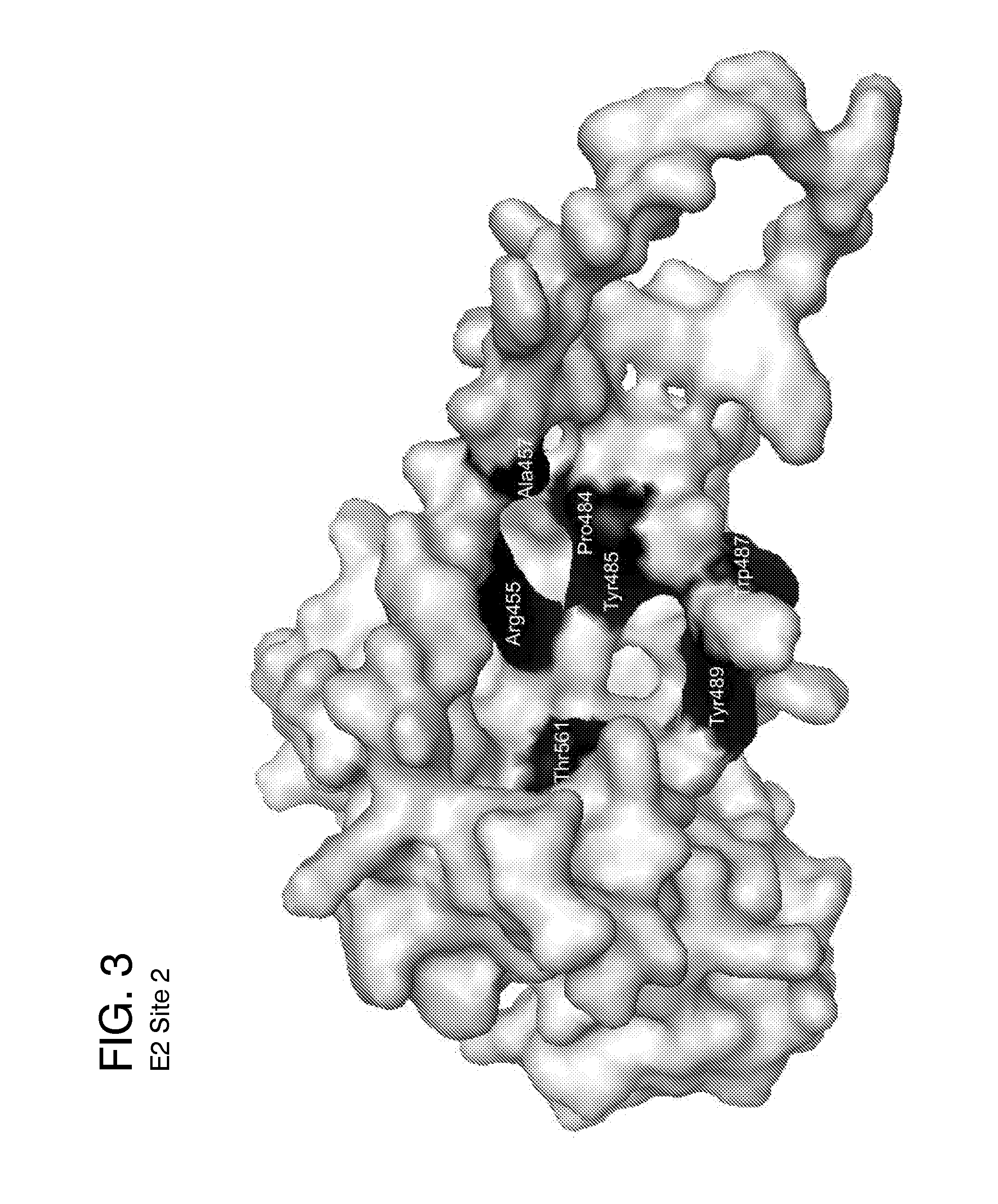Ligands that target hepatitis c virus e2 protein
a technology of hepatitis c virus and ligands, which is applied in the direction of organic active ingredients, pharmaceutical non-active ingredients, and heterocyclic compound active ingredients, etc., can solve the problems of poor safety profile, number of undesirable side effects, and out of the reach of many hcv infected patients
- Summary
- Abstract
- Description
- Claims
- Application Information
AI Technical Summary
Benefits of technology
Problems solved by technology
Method used
Image
Examples
example 1
Creation of the Homology Model of E2 Used for Docking
[0138]A crystal structure of E2c deposited in the PDB under a code 4MWF was resolved by Kong et al. [12] at a resolution of 2.65 Angstroms. However, upon examination of the structure file prior to docking, the set of reported atom coordinates of the protein was found to be incomplete. In addition to the coordinate file containing structural information for only 171 residues out of the 363 amino acids present in the full-length protein, structural information was missing for several peptide segments or loops (P453-P491, V574-N577 and F586-R596) within the structural core of the protein. The crystal structure was also obtained using a protein sequence that contained several amino acids (S422, D423, S444, E445, and D448) that were not present in the genotype 1a sequence of the E2 protein.
[0139]In order to prepare a more complete version of the structure for docking, we have performed several homology modeling and structure analysis t...
example 2
Virtual Screen of the NCI Diversity Set III to the HCV E2 Protein Model
[0141]AutoDock VINA 1.1.2 (VINA) [26] was used to perform a Virtual Screen of the NCI Diversity Set III against the model of the E2 protein from Hepatitis C Virus (HCV), using the homology model that was created based on the new crystal structure developed by Kong et al. [12] (PDB ID: 4MWF.pdb). The model of the protein was prepared using the MolProbity Server (to add all of the hydrogen atoms and to flip the HIS / ASN / GLN residues if doing so significantly lowered the energy) and AutoDockTools4.2 (which added the Gasteiger-Marsili charges and merged the non-polar hydrogens onto their respective heavy atoms) [27,28]. The NCI Diversity Set III library containing 1,715 models of compounds was obtained from the ZINC server (http: / / zinc.docking.org) [29]. The multi-molecule “mol2” files from ZINC were prepared for docking calculations using Raccoon [30], which added the Gasteiger-Marsili charges, merged the non-polar h...
example 3
Ligands Predicted to Bind to CD81 Binding Sites on E2
[0162]Five ligand-binding sites on the HCV E2 homology model (FIG. 2-6) were identified by blind docking of the Diversity Set III library of ligands to the E2 model. Each of these sites is associate with or positioned next to one or more of the amino acid or peptide sequences that have been identified by others to either participate in E2 binding to CD81, to E1 or to be important for HCV infectivity. The first sequence of importance is the peptide segment Q412-N423 that was identified to bind to the broadly neutralizing antibody AP33 [13, 42]. Alanine mutagenesis studies have shown all of the amino acids in this region appear to be important for HCV infectivity [43]. The model used in this study currently contains only three of the amino acids that correspond to this site, H421, 1422 and N423. Sequence 2 spans the second hyper-variable domain of E2, extending from amino acid Y474 to R492 [13, 21, 43-45]. The majority of amino acid...
PUM
| Property | Measurement | Unit |
|---|---|---|
| Structure | aaaaa | aaaaa |
| Pharmaceutically acceptable | aaaaa | aaaaa |
| Crystal structure | aaaaa | aaaaa |
Abstract
Description
Claims
Application Information
 Login to View More
Login to View More - R&D
- Intellectual Property
- Life Sciences
- Materials
- Tech Scout
- Unparalleled Data Quality
- Higher Quality Content
- 60% Fewer Hallucinations
Browse by: Latest US Patents, China's latest patents, Technical Efficacy Thesaurus, Application Domain, Technology Topic, Popular Technical Reports.
© 2025 PatSnap. All rights reserved.Legal|Privacy policy|Modern Slavery Act Transparency Statement|Sitemap|About US| Contact US: help@patsnap.com



